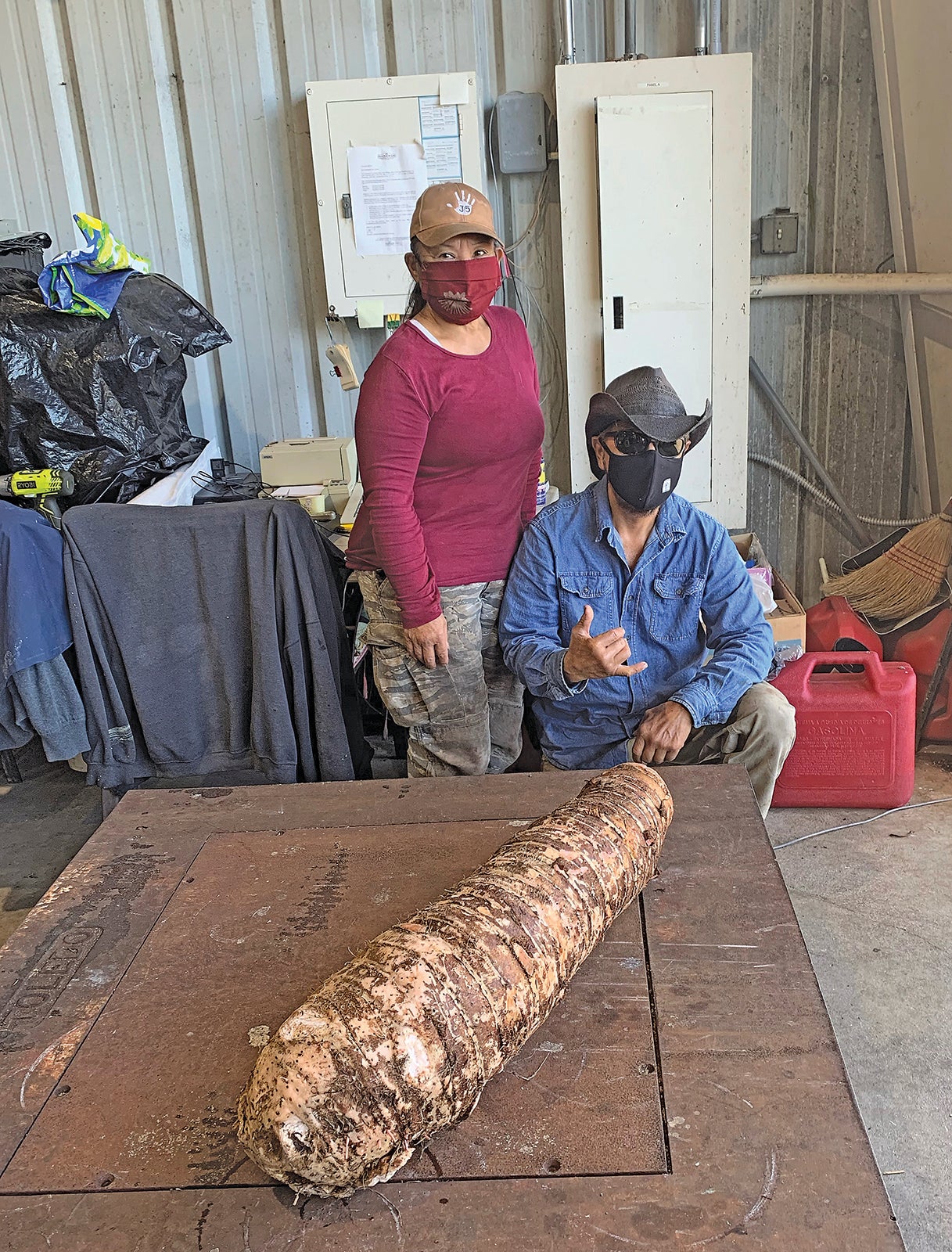Massive Hawaii taro root could be largest ever harvested
A super-sized taro root has been harvested on Hawaii’s Big Island

Your support helps us to tell the story
From reproductive rights to climate change to Big Tech, The Independent is on the ground when the story is developing. Whether it's investigating the financials of Elon Musk's pro-Trump PAC or producing our latest documentary, 'The A Word', which shines a light on the American women fighting for reproductive rights, we know how important it is to parse out the facts from the messaging.
At such a critical moment in US history, we need reporters on the ground. Your donation allows us to keep sending journalists to speak to both sides of the story.
The Independent is trusted by Americans across the entire political spectrum. And unlike many other quality news outlets, we choose not to lock Americans out of our reporting and analysis with paywalls. We believe quality journalism should be available to everyone, paid for by those who can afford it.
Your support makes all the difference.A super-sized taro root has been harvested on Hawaii's Big Island.
The 50-pound corm, which is the root of a taro plant, was grown on Aina ‘Ahiu Farm in Hawaii Island’s South Kona district and could possibly be the largest on record, West Hawaii Today reported Wednesday.
The U.S. Department of Agriculture says taro plants usually weigh between 1 and 2 pounds. This one — including corm, stalk and leaves — weighed close to 100 pounds.
Clarence and Nellie Medeiros, who harvested the plant, said it could feed about 180 people.
The couple plans to submit the specimen to the Guinness Book of World Records.
The current Guinness record is a 7 pound root grown in China in 2009.
The entire taro plant can be eaten, not just the root, in a variety of Hawaiian dishes from the staple poi to lau lau and squid luau, both of which include taro leaves.
The bottom of the plant, the huli, can be planted again after harvest and the plant will grow again.
“We are doing it with a purpose and to keep it going for generations," Clarence said. “Our grandsons are putting the Huli back. It comes full circle. Different generations feeding the next generations.”